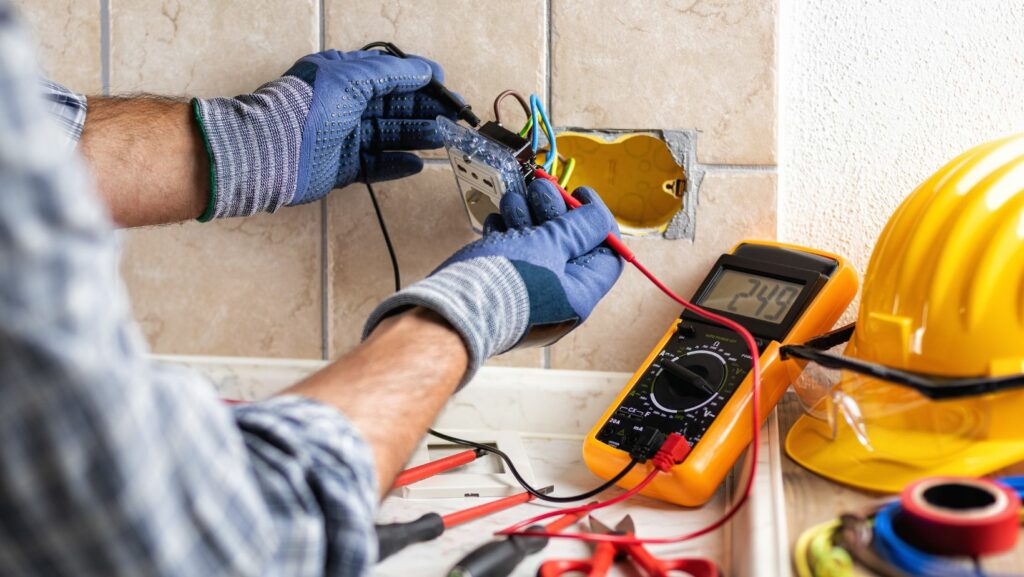Electrical safety is paramount in the field of electrical work. Licensed electrician in Conway are not only tasked with ensuring power supply but also with safeguarding lives and property. We will explore the top 12 safety tips every electrician should know. These tips are essential for preventing accidents, injuries, and even fatalities due to electrical hazards. By following these guidelines, electricians can create a safer working environment for themselves and others.
Proper Training and Certification
Before delving into the intricacies of electrical work, electricians must undergo thorough training and obtain relevant certifications. This training equips them with the necessary knowledge of electrical systems, safety protocols, and risk assessment. Certification ensures that an electrician has met industry standards and possesses the skills to handle electrical tasks safely and efficiently.
Use of Personal Protective Equipment (PPE)
Electricians should always wear appropriate Personal Protective Equipment (PPE) while working with electricity. This includes insulated gloves, safety glasses, hard hats, and flame-resistant clothing. PPE protects against electrical shocks, burns, and other potential hazards, significantly reducing the risk of injuries.
Conduct Regular Safety Inspections
Regular safety inspections of electrical equipment and systems are crucial for identifying potential hazards and addressing them promptly. Electricians should inspect wiring, outlets, switches, and appliances for signs of wear, damage, or malfunction. Timely repairs and replacements can prevent electrical failures and mitigate the risk of accidents.
Adherence to Electrical Codes and Standards
Electricians must adhere to national and local electrical codes and standards for installations or repairs. These codes are designed to ensure the safety and reliability of electrical systems. By following code requirements, electricians can minimize the chances of code violations, electrical faults, and associated hazards.
Proper Lockout/Tagout Procedures
Before working on electrical systems or equipment, electricians should implement proper Lockout/Tagout (LOTO) procedures.

This involves de-energizing the equipment, locking it out to prevent accidental re-energization, and tagging it to indicate that maintenance work is in progress. LOTO procedures are vital for avoiding electrical shocks and ensuring personnel safety.
Maintain Clear Communication
Effective communication is essential, especially when working as part of a team or close to other tradespeople. Electricians should communicate clearly about electrical work schedules, procedures, and potential hazards. Clear communication helps prevent misunderstandings, reduces the risk of accidents due to miscommunication, and promotes a safer working environment.
Avoid Overloading Circuits
Overloading electrical circuits can lead to overheating, fires, and equipment damage. Electricians should carefully calculate the electrical load on circuits and avoid exceeding their capacity. Circuit breakers, fuses, and surge protectors can help prevent overload and enhance electrical safety.
Proper Grounding and Bonding
Ensuring proper grounding and bonding of electrical systems is crucial for preventing electrical shocks and fires. Electricians should follow the manufacturer’s guidelines and industry standards for grounding conductors and bonding metal components. Proper grounding also helps dissipate electrical surges and maintain system stability.
Stay Updated with Industry Developments
The field of electrical work is constantly evolving with new technologies and safety practices. Electricians should stay updated with industry developments, attend relevant training programs, and continuously enhance their skills. Awareness of emerging trends and best practices enables electricians to adapt to changing work environments and improve safety measures.
Emergency Preparedness and Response
Electricians should be well-prepared to handle emergencies such as electrical fires, shocks, or equipment failures. They should know the location of emergency shut-off switches, fire extinguishers, and first-aid kits. Regular emergency drills and training sessions ensure electricians can respond effectively during critical incidents, minimizing potential damages and injuries.
Regular Equipment Maintenance
Electricians should prioritize regular maintenance of electrical equipment and tools to ensure optimal performance and safety.

Inspecting tools for wear and tear, replacing damaged cords or components, and keeping equipment clean and well-maintained can prevent malfunctions and accidents. Scheduled maintenance also extends the lifespan of tools and reduces the likelihood of unexpected failures during work.
Continuous Risk Assessment
Continuous risk assessments are essential for identifying potential hazards in the work environment. Electricians should assess environmental conditions, workload, and task complexity to determine safety risks. Implementing mitigation strategies based on risk assessments, such as additional safety measures or adjusting work procedures, helps minimize the likelihood of accidents and promotes a culture of safety awareness among team members. Regularly reviewing and updating risk assessments ensures that safety protocols remain practical and relevant to evolving work conditions.
Electrical safety is non-negotiable in electrical work. By incorporating these top 12 safety tips into their practices, electricians can significantly reduce the risks associated with electrical hazards. From proper training and PPE usage to adherence to codes and emergency preparedness, these tips form the foundation of a safe and secure working environment. Prioritizing safety protects electricians and safeguards the well-being of clients, colleagues, and the public.


More Stories
Beyond the TFSA and RRSP: Non-Registered Investment Accounts in Canada
From Wet to Wow: How Basement Waterproofing Unlocks Hidden Home Potential
From Functional to Fabulous: How a Bathroom Renovation Enhances Your Daily Routine